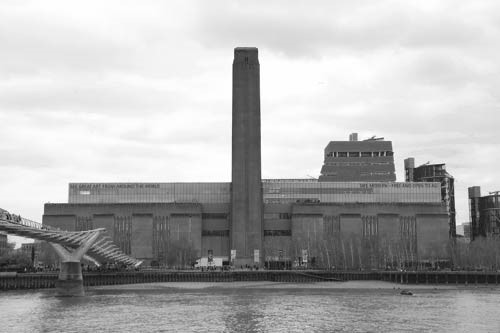The Tale of Bankside Power Station
The Tate Modern, one of Britain’s crowning architectural jewels, is world-renowned for its impressive collection of modern and contemporary art featuring renowned artists from Ai Weiwei to Warhol. Yet, this celebrated building holds a lesser-known tale – a fascinating history as a pivotal player in London’s electricity supply – living under the shadow of its more famous power station sibling, Battersea.
A Power Station’s Journey Begins
The story of Bankside Power Station, the present-day Tate Modern, started back in 1891. Its initial role was to energize the City of London, but as the years rolled on, its significance within London’s energy landscape heightened. Early in the 20th century, as a coal-fired station, it fell under scrutiny due to the pollution it spread over the city.

The station evolved and expanded over time, eventually coming under the umbrella of the British Electricity Authority in 1948. By then, it was deemed an inefficient and environmentally harmful plant, with a thermal efficiency of only 15.82%. Plans were soon underway to erect a new, more modern plant on the site. Originally designed to be coal-powered, the blueprint was revised in 1947 due to power and coal shortages, leading to the construction of the UK’s first oil-fired power plant.
Designing the Iconic Structure
The iconic building’s construction was undertaken in two phases to allow the original power station to operate concurrently. The iconic tower was the creation of Sir Giles Gilbert Scott, the designer behind the universally recognized red telephone boxes (K-series) and the grand Liverpool Anglican Cathedral. The majestic structure stands opposite the celebrated St. Paul’s Cathedral, with its impressive chimney stack, a mere 99m tall, marginally falling short of St. Paul’s height.
The decision to house a 300MW capacity oil power station at Bankside ironically paved its path to closure. Contrary to popular belief, environmental concerns were not the primary driver behind its termination. The plant was well-equipped with desulphurisation measures, capable of removing over 97% of sulphur compounds. Instead, it was the steep oil price hike from 1973 that triggered the downfall of this plant, which consumed a staggering 67 tonnes of oil per hour. The power station ceased operations on 31st October 1981, laying dormant until 1994 when the Tate Gallery announced the site’s redevelopment. It wasn’t until 2000 that the Tate Modern finally opened its doors. Interestingly, the site continued its energy story till 2006, housing an electrical substation until its decommissioning.
A New Chapter
Today, the Tate Modern stands as a testament to the intersection of industry and art. Visitors are captivated by the grandeur of the Turbine Hall, a vast space stretching 150m long, echoing the massive industrial units that once stood there. This majestic space, once destined for oblivion, has been repurposed into a much-loved cultural hub, preserving an important piece of industrial heritage.

Towards a Sustainable Future
Looking to the future, a visit to the 6th-floor café offers a view of London’s impressive landscape, with a glimpse of a greener future. Lining the Blackfriars bridge to the right are 4,400 solar panels, silently and cleanly producing 900MWh of electricity annually.

Thus, the transformation of the Bankside Power Station to the Tate Modern serves as a compelling narrative of how the old can be repurposed to serve the new, in both the fields of energy and culture.

